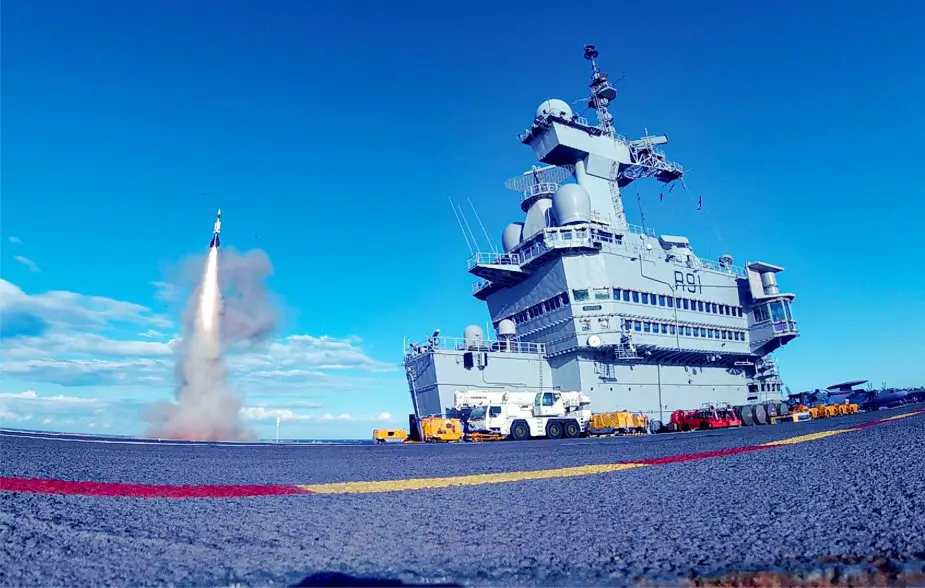According to information published by the French MoD on April 23, 2024, two ships from the Carrier Strike Group launched anti-air missiles in a scenario that simulated real-world aerial threats.
Follow Navy Recognition on Google News at this link
 French aircraft carrier Charles de Gaulle. (Picture source: US DoD)
French aircraft carrier Charles de Gaulle. (Picture source: US DoD)
The air defense frigate, Chevalier Paul, and the aircraft carrier, Charles de Gaulle, successfully fired an Aster 30 and an Aster 15 missile respectively, shortly after setting sail for Mission AKILA.
The operations, which occurred hours apart, involved simulated targets that replicated the conditions likely encountered in active naval engagements. The frigate Chevalier Paul, serving as the air defense leader for the naval group, engaged and neutralized a long-range aerial threat using the Aster 30 missile in a challenging non-permissive environment. Meanwhile, the Charles de Gaulle hit an aerial target with an Aster 15 missile, confirming the effectiveness of its layered defense system.
The missile tests were carried out against remote-controlled targets, including drone simulators and anti-ship missile replicas, at the DGA Missile Tests expertise and testing center at Levant site. This facility played a crucial role in target setup and coordination of the firing sequences.
The Aster missiles, available in two variants—the Aster 15 with a range of approximately 30 kilometers and the Aster 30 reaching about 100 kilometers—are key components of the navy's FREMM multipurpose frigate, anti-air frigates (FDA), and the Charles de Gaulle aircraft carrier. They are also slated for inclusion on the future defense and intervention frigates (FDI), enhancing the fleet's capabilities to counter aerial threats effectively.
Aircraft carriers
Aircraft carriers are heavily armed primarily due to their strategic importance and role in modern naval operations. These vessels serve as floating airbases that can project power far from the home shores of a nation, enabling rapid military responses without the need for foreign bases.
The vast array of armaments, including radar-guided missiles and anti-submarine helicopters, is mainly for self-defense, as carriers are high-value targets in naval warfare due to their size and capabilities.
Modern carriers incorporate advanced defensive technologies, such as integrated fire control systems that network sensors and weapons across multiple platforms.



